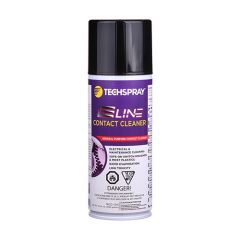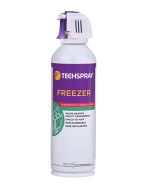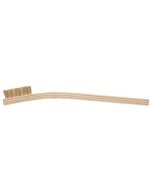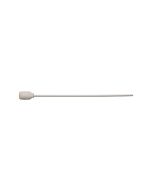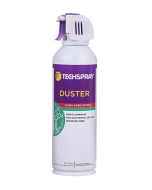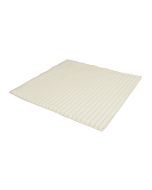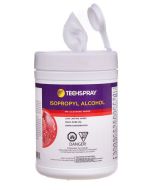
Licron Crystal ESD-Safe Coating, 8 oz. Can
Versatile, crystal clear urethane coating that adheres to metal, plastic, and most other surfaces. Ideal for converting standard bumpers, bins, tools, and surfaces to ESD safe, saving expensive replacement costs. The end result is compliant with ANSI/ESDS20.20, which prevents static damage to sensitive electronic components.
- Rugged static dissipative coating
- Surface Resistivity of 10^6 To 10^9 ohms
- Operating temperature range up to 302°F (155°C)
- Humidity independent
- Superior adhesion to a variety of surfaces: glass, plastic, etc.
- Coverage - 1 gallon @ 1 mil wet film will cover ~1600 sq ft, @ 2 mil ~800 sq ft
- Non-ozone depleting
- Comprar 12 por USD 52.02 cada uno
- Comprar 50 por USD 51.48 cada uno
- Comprar 100 por USD 50.95 cada uno
FAQ's
How long will the Licron Crystal coating last before I have to reapply?
The EDS-safe properties don’t fade over time. The only thing they have to worry about is wear-and-tear on the surface. If a walking surface, I would recommend a floor coating instead. If a working surface, I would suggest putting an ESD-safe mat over the Licron Crystal coated surface. Licron Crystal is not chemically resistant, so the mat becomes very important if we are cleaning with a solvent like IPA and dripping it all over the place. If it is a surface out of reach, so it doesn’t get abused, I would recommend they check the resistivity every month if it is critical, or every 3 months if less critical. If the resistivity hasn’t changed, they can leave it alone. How often they will have to reapply depends on the environment. If a clean environment, they can wipe it down with water and make it last for a very long time – years even. If in a greasy, sooty environment, they will have to clean with some kind of cleaning agent, which can degrade the coating. This will require more frequent reapplication.
How do I properly dispose of an aerosol can after it is empty?
It may be different state by state, so contact your state environmental agency for regional specific regulations. For a general guideline, here is the process according to EPA hazardous waste regulations 40CFR. The can has to be brought to or approach atmospheric pressure to render the can empty. Puncturing is not required, only that it “approach atmospheric pressure”, i.e. empty the can contents until it’s no longer pressurized. This ensures that as much contents as is reasonably possible are out of the can. It is then considered “RCRA-empty”. At that point, it can be handled as any other waste metal container, generally as scrap metal under the recycling rules. Note that the can is still considered a solid waste at this point (not necessarily hazardous waste).
*This item is hazardous and will be subject to an additional Hazmat fee.
| Unidad de venta | cada uno |
|---|---|
| SKU | I205964 |
| Modelo del fabricante | 1756-8S |
| Marca | TechSpray |
| ESD certificado | Sí |
| Talla/Tamaño | 8 oz. |



